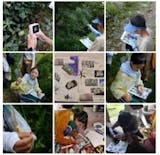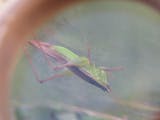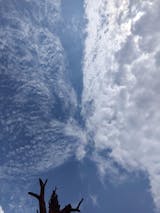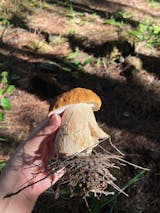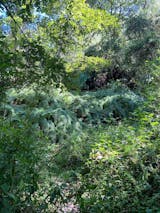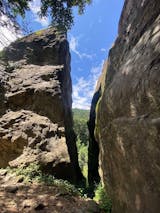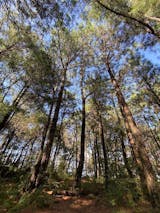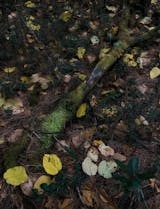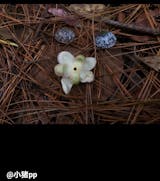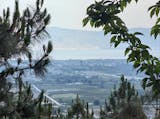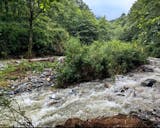"This is an easy hike that is just over 2 kilometers long and reaches an altitude of about 100 meters. It is suitable for all ages, from young children to seniors. During the activity, we will walk through the fields at the foot of Cangshan Mountain and climb a hill, stopping along the way to observe the rich and diverse flora and fauna in the area and learn interesting facts about them. The route has a wide view and you can see Cangshan Mountain up close, while also enjoying a panoramic view of Erhai Lake and nearby villages."
About Phoebe:

Phoebe is a freelance translator fluent in English, Japanese and French. She has translated over 20 books and picture books, including My Nature Play Book (French), Exploring Space - My First Exploration Atlas (English) Sustainable good life (Japanese). She is an art, culture and nature lover with seven years of experience observing nature. Phoebe has also been keeping a diary for eight years, and her diary sketches have been published in City Pictorial Magazine . Her WeChat public account is: "Phoebe's Wanderings in the World".
You can find her full list of translations on her Douban page (ID: oldphoebe).
Jason | What I Know About Phoebe
Phoebe | Shining Days
What is Nature Notes?
Nature notes are pictures left by ancient humans in caves, exploration diaries from the Age of Discovery, and observation records left by all humans in their interactions with nature. Nature notes can be taken in any form, and you can be creative and include all possible forms of recording. Among them, writing and drawing are the most basic ways of recording. Active observation, thinking, and questioning are the core of nature notes.
Why do we take nature notes?
Nature notes are the best way for modern people to step out of the virtual world, return to the present, mobilize their senses, focus on the present, experience the joy of discovery, feel the happiness of life, and rebuild their connection with nature.
What can nature notes bring us:
☉Possess both scientific and aesthetic observation skills
☉ Creative writing and technical writing skills
☉The ability to plan and present your ideas
☉Cognitive and analytical abilities
☉Ability to ask questions, ability to invent and create, and comprehensive ability
☉The ability to meditate, concentrate, soothe pain, and calm the mind
☉The ability to appreciate nature and space deeply
☉The ability to share with family members
☉Spiritual comfort, learn to open your heart to new things
☉Confidence and the ability to express oneself
☉ Cultivate self-learning ability and challenge observers to combine knowledge and experience
——This paragraph is excerpted from Notes on Nature, P13, P9
Guest Works:


Phoebe's Notes:


Phoebe's words:
In 2015, when I was playing with my friend Yuan Snail at the former site of Zhijiang University on the bank of Qiantang River, I was surprised by her sharp eyesight. It was the first time for me to enter the microscopic world after adulthood, pay attention to the tiny creatures around me, and see the smiley face pattern on a small insect... Yuan Snail is engaged in children's aesthetic education. Following the children's perspective of preschool educators, I seemed to have returned to my childhood.
Falling in love with natural history is a wonderful thing. It restarts your childlike curiosity about everything in the world. Before that, I think the best time is on the road. All non-daily feelings are fresh, exciting, thrilling and impressive. But as long as you are interested in observing nature, you can get fresh experiences every day without traveling far. Ordinary walks near home may also bring surprises. The natural world is so vast. There are always some beautiful things and wonderful details in plants, animals, rocks, soil, clouds... You have never noticed them. In other words, nature provides endless possibilities for aesthetics and exploration. As Thoreau, the pioneer of American nature literature, said: "Most natural phenomena... are beyond our lifetime. The beauty of nature we can see is only the part we are willing to appreciate, exactly... People can only see what they care about." Becoming a natural observer means that you will never be bored. Not being bored means a spiritual richness that does not rely on external things.
In today's era of material abundance, but people are generally anxious and lacking a sense of meaning, the comfort that nature brings to the soul is becoming increasingly indispensable. As mentioned in the book "Notes on Nature": "Nature is a psychotherapist for everyone." Nature notes provide a way to get close to nature, a place for contemplation, meditation and self-healing. Observation makes you profound; recording brings space for reflection.
I am a language learning enthusiast. A new language is like Alibaba's spell, opening the door to a wonderful new world. Ouyang Ting, the author of "A Tree in the North", said: "Nature needs to be learned. The more you learn, the deeper your understanding will be." Indeed, learning nature, like learning a language, requires patience.
My friend Bubble Bear said it well: "I feel that learning from nature still requires blank space. What is this 'white space'? It is the awe of nature, one's own exploration and discovery. Those creations and records are the precious colors in the blank space." My friends in nature notes and I have truly felt that the idea of taking nature notes has made us more sensitive to everything around us. Welcome to sign up for our nature notes activities and join our nature observation + nature notes + nature painting exchange group to continue observing and creating, and truly turn natural history into a lifestyle .
Activity process:
14:30 (starting time may be adjusted depending on sunset time and weather conditions) Gathering, introduction of activities and equipment
14:45 Hike, observe and learn about plants and insects along the way, and record their characteristics
17:00 Picnic and tea break on the hillside, continue exploring the hillside, and complete the notes
18:00 Return
Photos from the event




Route Overview:
This is a quiet and relaxing hiking route that passes through a tea plantation. Apart from local villagers, few people come here. You can observe rich animal and plant species, as well as see the open landscape of Cangshan Mountain and Erhai Lake.

Before late winter, this is the route to see winter cherry (Prunus subhirtella), whose bright pink flowers contrast with the golden leaves of the poplars along the way. The monkey head azaleas begin to bloom on the hillsides, and the azaleas are in full bloom until spring. In spring, the mountain wildflowers bloom, with alpine ash, wild roses, Japanese spirea, viburnum, pyracantha and various grass flowers blooming along the way. On the hillside during the tea break, azaleas bloom deep in the forest. As summer approaches, insects become active and occasionally surprise people. Along the way, delicious wild berries are ripening.
Red-bellied squirrels are frequent visitors here and can easily be seen frolicking in the trees. We also saw Yunnan rabbit burrows here, as well as a variety of colorful forest birds such as Black-capped Chickadees, White-throated Laughingthrush, Black-faced Laughingthrush and Black-browed Chickadees. In spring, it is easy to spot colorful shield bug larvae, short-horned grasshoppers, seven-spotted ladybugs and various butterflies. In summer, the variety of insects increases further, and various leaf beetles, stink bugs, grasshoppers, mantises, spiders and moths continue to emerge for your eager discovery!
You will pass a small mountain temple along the way. The downhill stone steps are slippery, so please wear non-slip shoes!
Impatiens balsamina

Hypericum

Sciurus erythrorhizor

Black-headed Babbler

Orthoptera: Acrididae, Exotrichum shorthorned

Lepidoptera Nymphalidae Nymphalidae

Hemiptera: Giant bug
Tip: If you have other good travel experience with other agencies, please recommend it to us and we will share it with travelers. WeChat: lingjiec, Email: lingjiec@yahoo.com (Many of our recommendations, including cancellations, come from travelers’ feedback)






































































